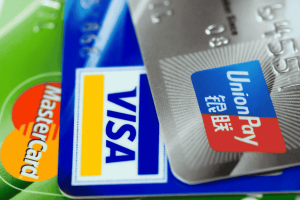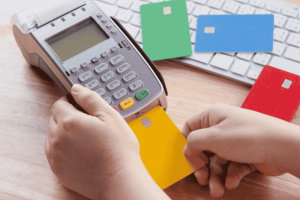Imagine shopping online without ever exposing your real credit card number. Picture signing up for a streaming service, booking a hotel, or making an in-app purchase—knowing your financial details are shielded from prying eyes. This is the promise of virtual credit cards, a technology that’s quietly revolutionizing the way people in Asia and around the world manage their digital finances.
But what exactly are virtual credit cards? Why are they gaining so much attention? And how can they make your online life safer and more convenient? Let’s explore the answers together.
What Are Virtual Credit Cards?

A virtual credit card is a digital version of your regular credit card, designed specifically for online or mobile transactions. Instead of using your physical card’s number, a virtual card generates a unique, temporary card number, expiration date, and security code for each purchase or merchant.
You can create a virtual card instantly through your bank’s app or website, and use it just like a regular card for online payments. Some virtual cards are single-use, while others can be set up for recurring payments or subscriptions.
How Do Virtual Credit Cards Work?
When you request a virtual card, your bank or card provider generates a random card number that’s linked to your real account. You use this number for online purchases, but your actual card details remain hidden.
After the transaction, the virtual card can expire or be locked, making it useless for future unauthorized charges. Some banks let you set spending limits, expiration dates, or even restrict the card to a specific merchant. This means that even if a hacker or scammer gets your virtual card number, they can’t use it for anything else.
Why Are Virtual Credit Cards Becoming So Popular?
The surge in online shopping, digital subscriptions, and mobile payments—especially across Southeast Asia—has made security a top priority. Virtual credit cards address many of the concerns that come with sharing your financial details online.
Key reasons for their popularity include:
- Enhanced security: Your real card number is never exposed, reducing the risk of fraud.
- Control and flexibility: Set limits, lock or delete cards instantly, and manage subscriptions with ease.
- Convenience: Create cards on demand for one-time purchases or recurring payments.
- Peace of mind: Even if a website is compromised, your main account remains protected.
The Benefits of Using Virtual Credit Cards
Let’s take a closer look at how virtual credit cards can improve your financial life:
Protection Against Online Fraud
With cybercrime on the rise, protecting your card details is more important than ever. Virtual cards act as a shield, making it much harder for hackers to steal your information or make unauthorized purchases.
Simplified Subscription Management
Ever signed up for a free trial and forgotten to cancel? With a virtual card, you can set an expiration date or spending limit, so you’re never charged more than you intend. Canceling a subscription is as easy as deleting the card.
Safer International Shopping
Shopping from overseas websites can be risky. Virtual cards let you shop globally while minimizing the risk of your details being stolen or misused.
Easy Budgeting and Spending Control
Set a spending cap on each virtual card. This is perfect for controlling online shopping, managing family spending, or even giving your kids a safe way to make purchases.
How to Get a Virtual Credit Card

Getting started is simple and user-friendly. Most major banks and fintech companies in Asia now offer virtual card services, making it easier than ever to protect your online transactions.
- Log in to your bank’s app or website.
Navigate to the section specifically dedicated to virtual or digital cards. This is often found under “Cards,” “Payments,” or “Manage Accounts.” - Look for the virtual card or digital card option.
Select this option to start the process. Many platforms will clearly label it as “Create Virtual Card” or something similar. - Follow the prompts to generate a new card.
You may be asked to set spending limits or expiration dates to increase security. Some banks even allow you to customize your virtual card for specific purchases or budgets. - Use the virtual card details for your online purchases.
Enter the virtual card number, expiration date, and CVV code exactly as you would with a physical card during checkout. This keeps your actual card information safe from exposure.
Some providers even let you create multiple virtual cards for different purposes—such as shopping, travel, subscriptions, or one-time use—giving you greater control and flexibility over your spending while improving security. This way, if a virtual card is compromised, you can easily deactivate it without affecting your main account.
Are There Any Downsides?
While virtual credit cards come with many benefits, it’s important to recognize some limitations and potential challenges:
- Limited acceptance: Although virtual cards are widely accepted for online and in-app purchases, some merchants—particularly outside of Asia—may not accept them for certain transactions such as hotel check-ins, car rentals, or other services that require physical card presentation.
- Restrictions on physical purchases: Virtual cards are primarily designed for online use and cannot be swiped or inserted at physical point-of-sale terminals. However, if your virtual card is linked to a mobile wallet (like Apple Pay or Google Pay), you may be able to use it in-store via contactless payments, but this depends on your bank and the wallet’s compatibility.
- Varying bank support: Not all banks or fintech providers have implemented virtual card services yet. Availability, features, and security measures can differ significantly between providers, so it’s important to verify what your bank offers before relying solely on virtual cards.
Understanding these downsides can help you make informed decisions about when and how to use virtual credit cards most effectively.
Virtual Credit Cards vs. Traditional Credit Cards
Let’s compare the two side by side:
| Feature | Virtual Credit Card | Traditional Credit Card |
| Security | High (unique numbers) | Standard (static number) |
| Use | Online/in-app only | Online and in-store |
| Control | Customizable limits/dates | Fixed limits/dates |
| Risk if stolen | Minimal | Higher |
| Subscription management | Easy to cancel | Must contact merchant |
Why Virtual Credit Cards Matter for Southeast Asia
Southeast Asia is experiencing a digital boom, with millions of young, tech-savvy consumers shopping, banking, and subscribing online. At the same time, cybercrime and online fraud are growing threats. Virtual credit cards offer a practical, accessible solution for safer digital transactions—empowering you to shop, subscribe, and spend with confidence.
Banks and fintechs in countries like Singapore, Malaysia, Indonesia, and the Philippines are leading the way, making virtual cards available to more people than ever before.
Practical Tips for Using Virtual Credit Cards
Use a virtual card whenever you shop with a new online merchant or sign up for a subscription; this helps keep your spending organized and reduces the risk of fraud. Setting customized spending limits on each virtual card prevents accidental overspending and adds an extra layer of protection against unauthorized charges.
Once you’ve completed a purchase or canceled a subscription, promptly delete or lock the virtual card to avoid any unexpected future payments. Make it a habit to regularly review your transaction history to quickly identify any suspicious activity and report it to your bank right away.
For even greater convenience and security, link your virtual cards to mobile wallets like Apple Pay or Google Pay—this lets you make fast, contactless payments without ever exposing your actual card information.
The Future of Virtual Credit Cards
As e-commerce and digital payments continue to grow, expect virtual credit cards to become even more common. New features, such as instant notifications, integration with budgeting apps, and support for international currencies, will make them even more powerful tools for managing your money.
Banks and fintechs are also working to make virtual cards easier to use in physical stores, through QR codes and NFC technology.
Conclusion: Embrace the Future of Secure Spending

Virtual credit cards have evolved beyond just being a passing trend—they represent a practical and effective solution to many challenges faced in today’s digital world. Offering enhanced control over your spending, increased security measures to protect against fraud, and the flexibility to manage multiple cards for different purposes, virtual credit cards empower you to shop and transact online with greater confidence and peace of mind.
Have you used a virtual credit card before? Feel free to share your experiences or ask any questions you might have in the comments below. If you found this guide useful, consider sharing it with friends and family who want to improve their online spending safety and make smarter financial choices.









